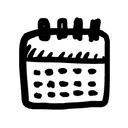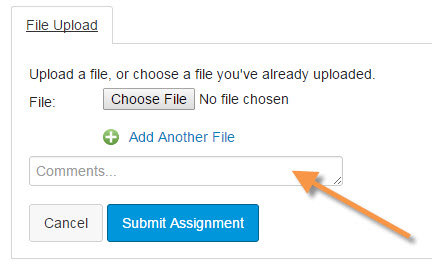Worth 15% of your course grade
 Important Dates
Important Dates
- July 19: Informal Proposal due by 11:59 PM
- July 20: Grace period for the proposal ends at 11:59 PM
- July 21: Rough Drafts for Peer Feedback, due by 11:59 PM
- July 23: Peer Feedback due by 11:59 PM
- July 26: Project 3 due by 11:59 PM
- July 28: Grace period ends at 11:59 PM
NOTE: We’re using the term "Job Application Materials" to cover a wide range of things that go beyond the traditional resume and cover letter to include any materials you might use to retain your job, work toward promotion, or network with colleagues.
Goals
The Project Assignment
 You will explore the kinds of documents you need in order
You will explore the kinds of documents you need in order
- to apply for and maintain a job, an internship, or a scholarship,
- to maintain your career and demonstrate your work,
- to work toward a promotion or otherwise advance your career,
- to network with employees in your new job.
You’ll propose what kind(s) of job application materials you want to write (anything goes—a traditional resume, a personal website, a LinkedIn profile, a GitHub repository, etc.). Based on your findings, you will create the job application materials that you need, whatever they may be.
Step-by-Step Details
Step 1: Conduct your research.
You probably know a bit about what you will need to gather for a job application after you graduate. For Project 3, you will build on that knowledge by researching what someone in your field needs to develop to get, keep, and advance in a job professionally and by building a network of colleagues.
Research the expectations for your field using the information in the textbook, your experience from internships and other jobs in your field, and the details from the Virginia Tech Career Planning Guide (available online or in print from Career Services on the Blacksburg Campus).
You can also rely on discussions with colleagues where you have worked, advice from faculty in your major, and information from other students and alumni. Review position listings for your field as well in order to see the kinds of material companies ask for. Look at the kinds of materials that are specifically requested as well as the kinds of resources companies often consult.
Step 2: Choose the focus for your project.
Based on your research, you should choose a broad focus for your job application materials. Some (not all) possible options are the following:
- Find a job posting you want to apply for and write the materials it requires.
- Find a internship posting you want to apply for and write the materials it requires.
- Find a scholarship you want to apply for and write the materials it requires.
- Create a personal website that provides a portfolio of your work and basic biography or resume.
- Clean up your online presence online and establish profiles in places that will help you network or get a job (like Academia.edu, LinkedIn or GitHub).
- Update your LinkedIn profile to network with professionals where you will be working in the future.
Additional examples are also available. I encourage you to choose whatever project is most helpful to you. Take advantage of this assignment to get something done you’ve been putting off or to get ahead on (or add to) your job search or career networking.
Step 3: Propose your project.
Use the proposal instructions and the information in Markel on writing proposals to know what information to include and how to submit your proposal. Your proposal is due July 19 by 11:59 PM.
I have never had to turn a proposal down, but I have asked for changes occasionally. If you are planning on a unique or unusual project, try to submit your proposal as soon as possible so that you can begin working on the materials with confidence that they will work for Project 3.
Step 4: Complete the work you have proposed for Project 3.
Create whatever job application materials you have proposed, working to meet whatever grade goals you have set for yourself.
You will submit your draft(s) for peer review by 11:59 PM on Thursday, July 21. If you are working on another site, you will need to set the page so that we can all read it and share the link to that site. If you are working on LinkedIn, log into Lynda.com with your Virginia Tech PID and password, and watch the video on Adjusting Your Privacy Settings.
Use the advice you receive from your readers to revise before the due date, which is Monday, July 25.
Step 5: Write your cover memo.
Write a cover memo that tells me whatever information I need to know to understand the work you did on your project. This memo should be the first page of your project. Your table will be the second page. Both documents should be in one file.
Your memo should use standard memo format, with the headings of To:, From:, Subject:, and Date. Include this information:
- Tell me your the job application project you have completed.
- If any of your work is online (like on LinkedIn), include the URL with your explanation of your work.
- Tell me what grade you aimed for (e.g., I aimed for a B+ by including headings and …).
- Tell me anything else you want me to know before I grade your project.
Be sure to explain the background on your piece fully. This cover memo is where you tell me about the work you put into the project and provide some self-evaluation of your work. The cover memo is the first thing I will read, so it is your opportunity to make sure that I have all the information that I need to understand your project.
Step 5: Submit your project in Canvas.
When you are finished with your cover memo and job application materials, turn in your work in Canvas, following the submission instructions. Remember that there are no rewrites or revisions after work is graded.



